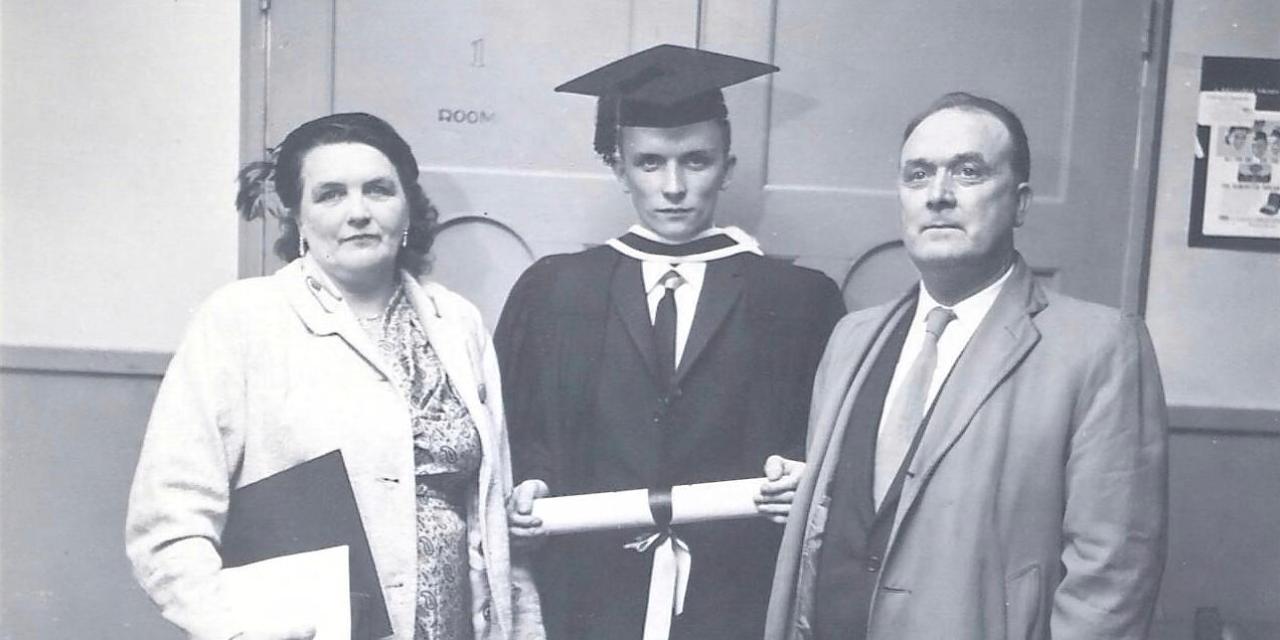A brook that flowed in many directions
"What odds about it?"
It was a phrase common in Patrick O’Flaherty’s community of Long Beach in the 1940s.
A condensed Newfoundland version of the Serenity Prayer, it spoke to a kind of stoic acceptance. Dr. O’Flaherty used it to describe his family home — more a shelter to eat and sleep in than a house. But there was an unspoken acceptance of its shortcomings: What odds about it?
He would leave that shelter and community at age 15 to attend St. Bon’s College in St. John’s. A two-time graduate of Memorial University, he returned with his PhD from University College London at just 24 to teach in the English department.
Around this time, his philosophy of accepting that certain things can’t be changed began to shift into something else — a desire to make change.
He became part of a broader cultural movement known as the Newfcult Phenomenon, a term coined by Dr. Sandra Gwyn. It aimed to transform how Newfoundland literature was perceived.
The 1960s to 1980s marked a cultural and artistic awakening in the province, a period of sustained creative activity by local artists working in a wide range of disciplines. Dr. Gwyn’s seminal 1976 article, “The Newfoundland Renaissance,” described how the Newfcult Phenomenon was advanced by men and women who helped validate the province’s traditions, music, dialects, beliefs, sayings and stories.
Artists like Gerry Squires. Bands like Figgy Duff. Comedy troupes like Codco. And academics like Dr. O’Flaherty.
Though his role was more scholarly, literary and institutional than performance-based, Dr. O’Flaherty contributed to the movement through his foundational scholarship and the courses he created, including Memorial’s first Newfoundland literature course and one of its first creative writing offerings.

Patrick O’Flaherty poses with his parents, Jane and Gus O’Flaherty, after receiving his bachelor of arts degree from Memorial in 1959. Photo from Memorial’s Digital Archives Initiative.
He was a pioneering Newfoundland academic and cultural historian who shaped Memorial’s curriculum and mentored generations of students.
He also helped found the journal Newfoundland Studies, encouraging critical engagement with the province’s literature, history and culture.
His own fiction and essays explored Newfoundland’s identity, isolation and tensions with modernity.
He wrote 15 books ranging from personal memoir to scholarly analysis.
The Rock Observed: Studies in the Literature of Newfoundland, published in 1979, is a foundational book in Newfoundland studies and one of the first critical surveys of the island’s literary tradition. It combines literary analysis with historical context and sociopolitical insight, creating a vivid portrayal of how Newfoundland has been perceived and portrayed over the years.
A reviewer at the time noted that Newfoundland was hardly known as a hotbed of literature. How profoundly that has changed — and how deeply we have Dr. O’Flaherty to thank for it.
Come Near at Your Peril (1992) is a sardonic but affectionate look at island tourism. In it, he advises potential visitors: “If you come here with a cholesterol problem, you’ll be sent home in a casket.”
It’s a love letter to the province that acknowledges the object of his affection isn’t perfect. He knows exactly who and what he loves — warts and all.
Peril is the most widely distributed of his books, but despite its popularity, it was banned from provincial tourist chalets — a distinction that made Dr. O’Flaherty chuckle with glee.
His most personal creation was Paddy Boy: Growing Up Irish in a Newfoundland Outport. It offers a vivid, affectionate and clear-eyed portrait of his early life in Long Beach. A blend of memory, social history and literary insight, it captures the textures of outport life with clarity and affection, but never sentimentality.
You know you’re in for a treat when a book starts: “An undertaker has a built-in advantage when he tries his hand at politics. He can always say he’d be the last man to let you down.”
Over the years, Dr. O’Flaherty donated his papers to the Archives and Special Collections at the QEII Library. A priceless literary and scholarly legacy, the collection includes his newspaper columns, book reviews, articles, clippings, correspondence, notes, drafts and scripts of CBC commentaries.
Dr. O’Flaherty has been described as a one-man powerhouse. An edgy professor. A pioneer. Brilliant, incisive and loyal.
He was unapologetic in his convictions, quick to puncture a pompous notion, and wielded a rapier wit.
As one of the Newfcult Phenomenon, he rejected colonialist attitudes and helped legitimize Newfoundland writing as a worthy subject of study.
What odds about it no more.
